Battersea Shaft Pumping Station (2020)
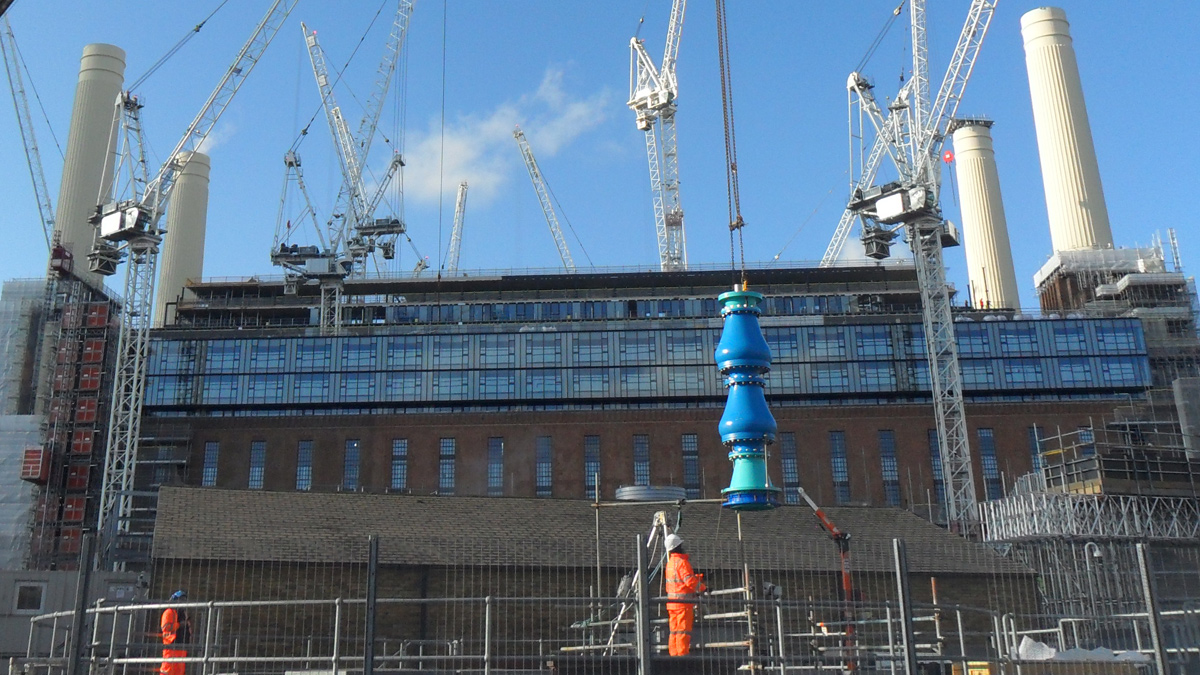
New pump being lifted - Courtesy of Stantec
The Thames Water Ring Main (formerly the London Water Ring Main) is a major part of London’s potable water supply infrastructure. Originally constructed between 1988 and 1993, it forms a 50-mile ring of mostly 2.54 m (100”) diameter concrete pipeline to transfer potable water from water treatment works in the River Thames and Lea catchments for distribution within London. The ring main lies between 10m and 65m below ground level and flows under gravity. It passes through 21 shafts that serve as supply, access, storage and pumping stations to pump out into supply.
Requirement
Battersea Shaft Pumping Station is a 30m deep vertical shaft containing six pumps that supply multiple zones in London. A significant amount of construction and new development is ongoing in the area, so network modelling was carried out to plan the network’s future behaviour and configuration. The reports showed that in coming years there will be a shortfall in capacity at Battersea Shaft PS during periods of peak demand. Additional pumped flow will be required, so the project brief was to replace one of the 30 Ml/day (350 l/s) nominally rated pumps with a new pump rated at 45 Ml/day (520 l/s). This is the practical maximum that one pump can achieve given the physical constraints of the existing site. More pumps will need to be replaced in coming years as development continues and water demand increases.
Replacing a pump also helped to reduce leakage in this case by improving pressure management. The existing variable speed drives have restricted speed ranges, resulting in regular over pressurising of water mains during night hours. The existing pumps and drives are also 30 years old and are approaching the end of their design lives.
A key project requirement was that the pumping station must be kept fully operational at all times. Only the pump to be replaced could be taken offline and its outage had to be minimised. This had a major influence on design and construction.
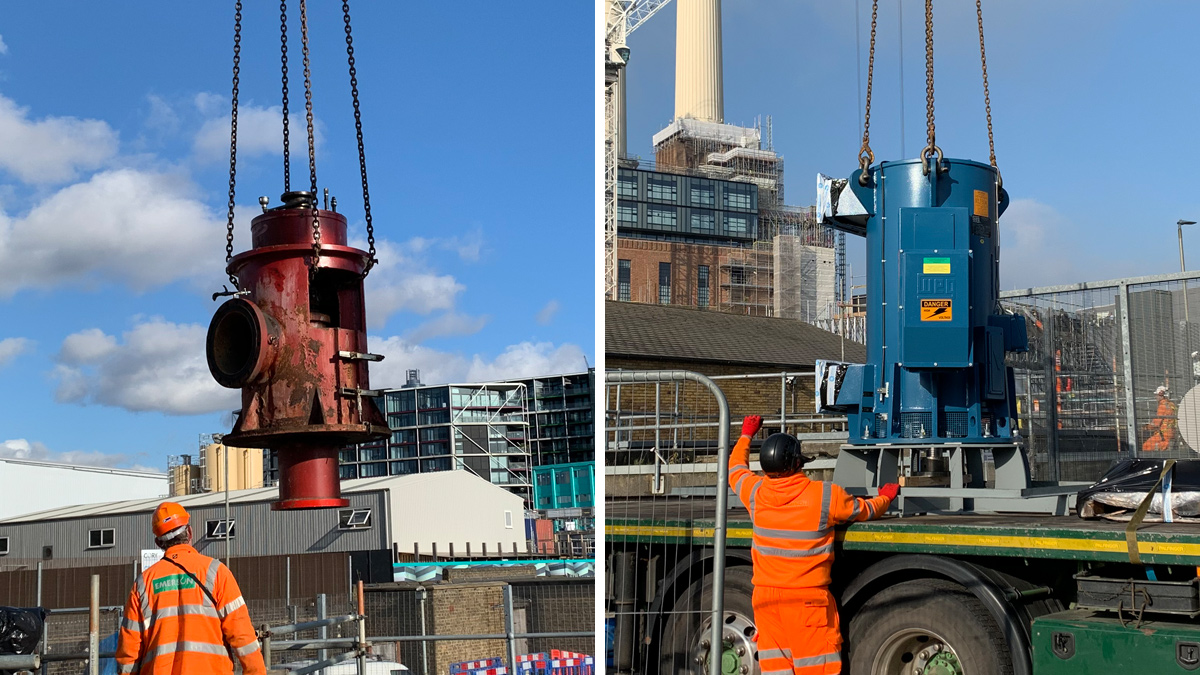
(left) Removing the old pump’s headworks and (right) offloading the new motor – Courtesy of Stantec
Pump design
The six existing pumps at Battersea Shaft PS are vertically suspended bowl (vertical turbine) type centrifugal pumps. Pump suction connections are manifolded directly to the Thames Water Ring Main. The pump casings/bowls are located at the bottom of the shaft to take advantage of the positive static head provided by the ring main. The drive motor and pump discharge bend (with mechanical seal and thrust bearing) are located on the more easily accessible upper floor of the shaft.
The existing pumps are equipped with slip ring motors driven by static Kramer drives – a variable speed drive system that has been made obsolete by modern variable frequency drives. The brushes on the slip ring motors require regular replacement with the associated downtime and maintenance costs.
Several different configurations for the new replacement pump were investigated, including retaining parts of the existing pump. Due to multiple site constraints and the restriction on outages, the decision was made to install a new replacement pump with the same configuration and interfaces as the existing pump where practical. Working within the many site constraints meant that a significant part of the design process was reverse engineering.
The new pump is of the same configuration as the original but with a larger diameter pump bowl and discharge column to meet the new duties, while matching the interface dimensions of the existing pump. An important consideration for the pump selection was to maximise hydraulic efficiency across the defined window of flows and heads that the pump is required to work in. The Bedford DB pump with mixed flow impellers has a hydraulic efficiency between 85% and 87% across the entire 30 -50 Ml/day (350-580 l/s) operating window.
A new 450kW induction motor suitable for variable frequency operation was supplied with the pump. Water cooling is used to match the cooling arrangement on the existing pumps.
New larger diameter pump discharge piping incorporating a nozzle check non return valve and electromagnetic flow meter was also installed. A reduced bore design of flowmeter was used as it required minimal straight lengths of upstream and downstream piping to function.
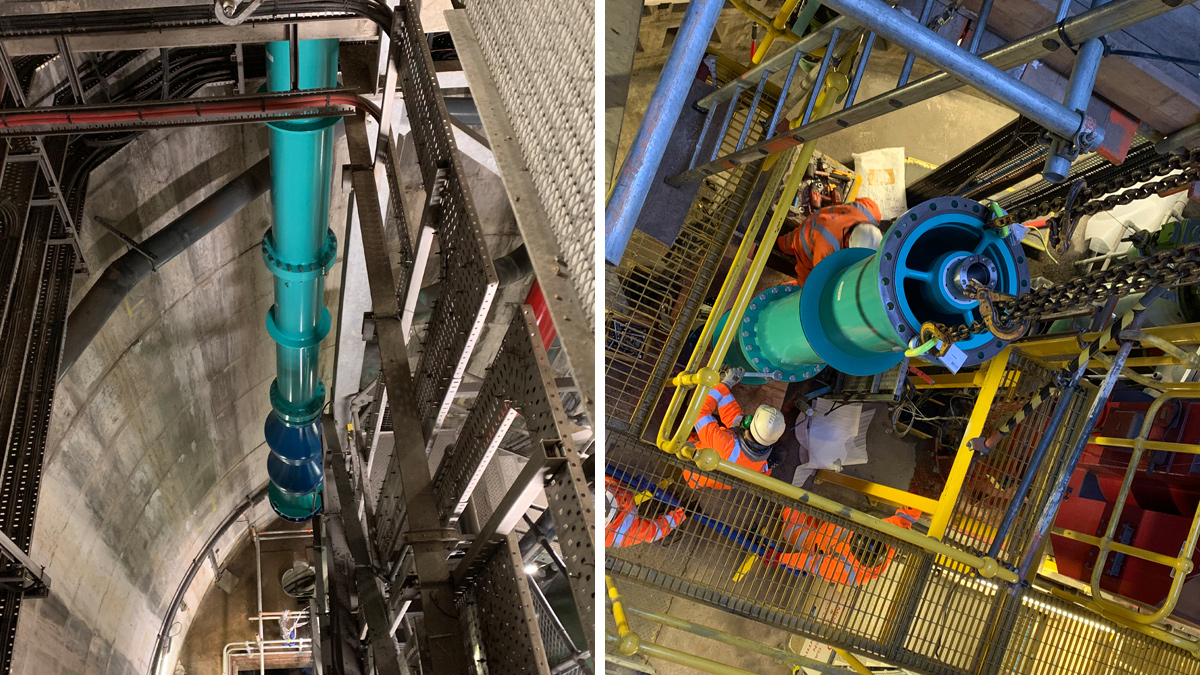
(left) New pump descending into the shaft (right) new pump being lifted into place – Courtesy of Stantec
Electrical design
Site loads and existing electrical equipment were assessed at the beginning of the project. The existing 11 kV/3.3 kV site transformers were found to have enough additional capacity to supply a new 450 kW variable frequency drive in place of the original drive.
The existing 3.3 kV static Kramer drive was replaced with a Rockwell Powerflex 7000 variable frequency drive. The new drive has a higher efficiency and increased functionality. The existing 3.3 kV switchboard had the provision to return power from the Kramer drive back to the grid. To avoid full site outages, the switchboard was retained and converted to a fused feeder with Kramer drive functionality removed.
The existing pump and motor had extensive fault detection instrumentation and a machine monitoring system. The same scope and functionality was installed on the new pump or improved upon where possible. Due to the site layout, replacing any cabling between the electrical equipment and pump would be invasive and require site shutdowns. This would not be acceptable, so all existing cabling was tested and retained. All of the new instrumentation had to be selected so that it was compatible with the existing cabling. This was another area where some reverse engineering was required, so extensive site surveys were made together with review of original documentation.
A new fibre node box with fibre/copper Ethernet switch was also installed for communications between the variable frequency drive and pump controller PLC. It includes spare capacity for the future integration of new equipment.
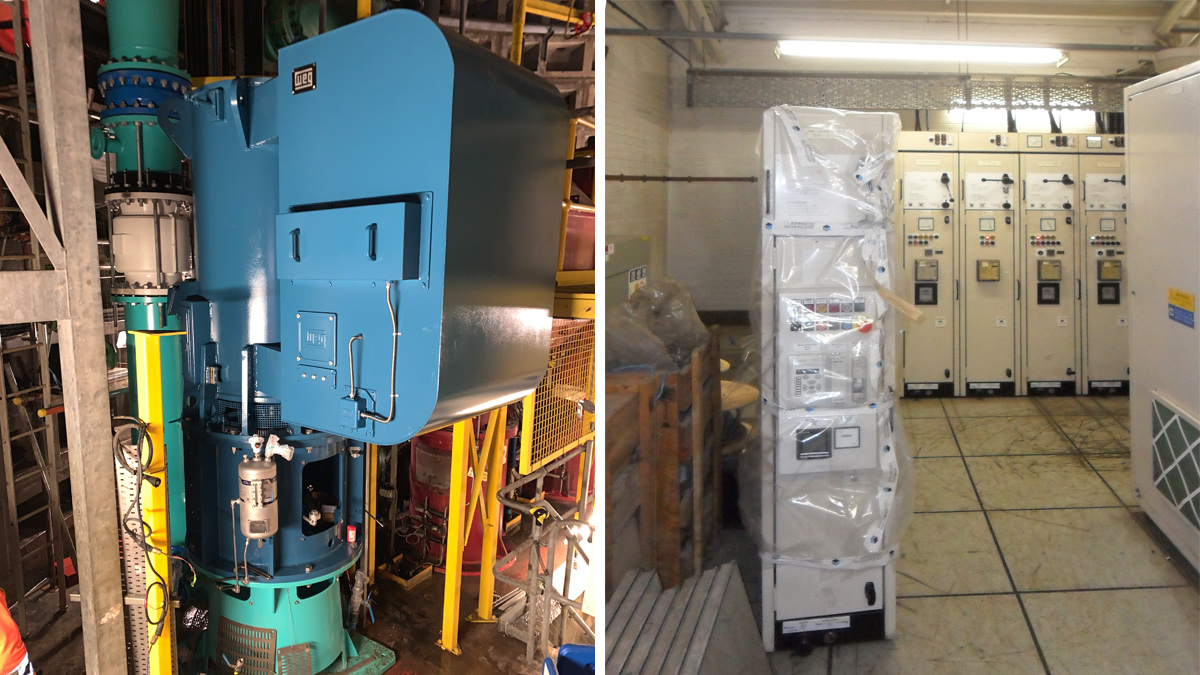
(left) Completed motor and headworks and (right) modified feeder waiting to be installed – Courtesy of Stantec
Battersea Shaft Pump Replacement – Supply chain: key participants:
- Client: Thames Water Utilities Ltd
- Principal designer/contractor: Eight2O – SMB jv
- Design: Stantec UK
- Pump: Bedford Pumps Ltd
- Flow controls: Auma Actuators Ltd
- Pump motor: WEG UK Ltd
- MEICA installation contractor: Field Systems Designs Ltd
- Systems integration: Bilfinger UK
- HV switchgear: The Automated Technology Group
- Variable frequency drive: Rockwell Automation
Construction
Detailed planning of the removal, installation and commissioning sequence was required before the existing pump could be taken offline and works could commence. Thames Water were heavily involved in this process. All new equipment had to be delivered and ready to be installed. The pump and variable frequency drive had already passed witnessed performance and acceptance tests at manufacturer’s works to ensure that they would achieve the specified duty.
The most critical phase of the installation was lifting the old pump out through the covers at the top of the shaft and then replacing it with the new one. Both pumps were lifted in sections and assembly of the new pump was carried out inside the shaft per the manufacturer’s instructions. The column and drive shafts are split into 3m lengths and were assembled section by section using special support beams supplied by the manufacturer.
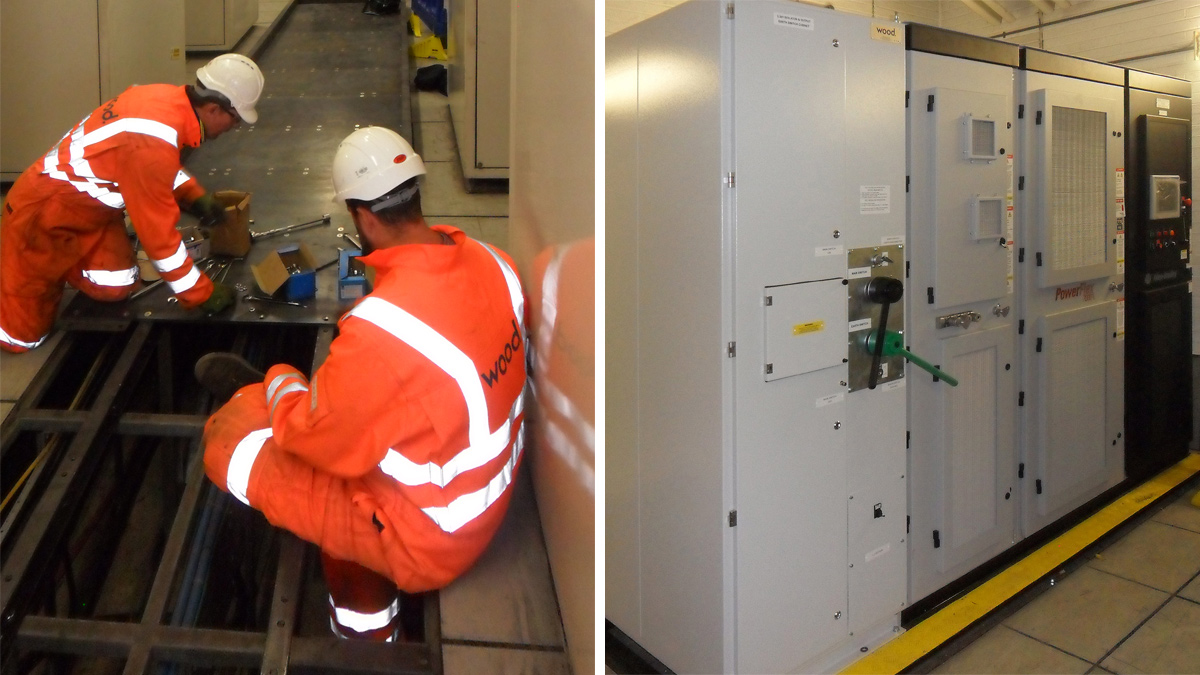
(left) Temporary switchgear room structural floor being assembled and (right) new variable frequency drive – Courtesy of Stantec
Lifting and shifting the new variable frequency drive was one of the biggest practical challenges as the false floor covering the switchgear building is made from Unistrut and could not withstand the 3000kg weight of the drive cabinet. The drive is located at the back of the building with restricted space, so a temporary structural floor had to be built to move the new drive into place on skates. A temporary lifting frame was built from scaffold inside the switchgear building to lift the drive into its final location.
Conclusion
The pump was successfully commissioned in January 2020 and is now in full service. Designing the new equipment to work with existing infrastructure together with detailed construction planning minimised the installation period and avoided pumping station outages.




